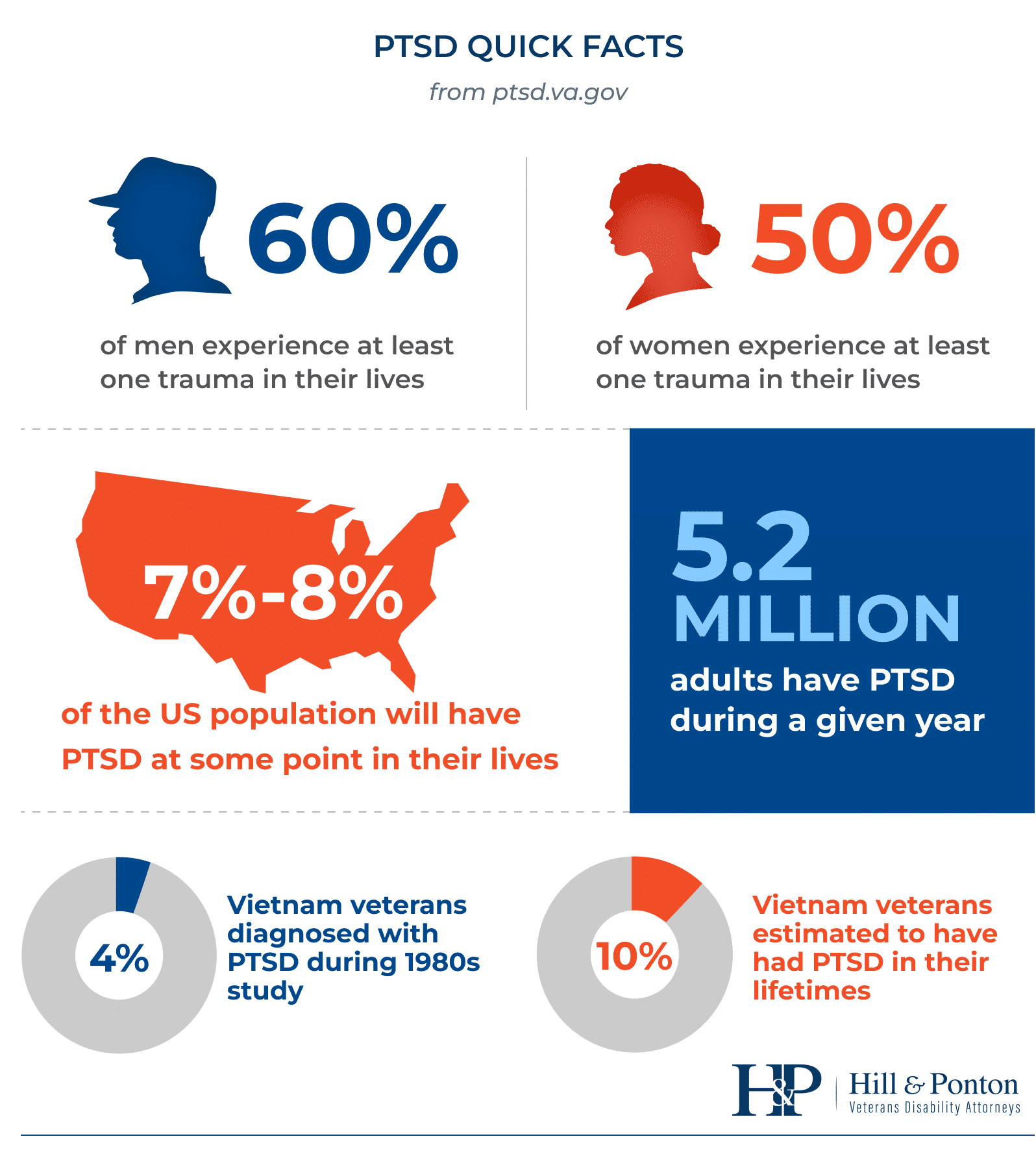Post-traumatic stress disorder (PTSD) is a condition that many veterans have heard of, but may not be familiar with its particulars, or even whether or not they are suffering from it. PTSD is commonly misunderstood and underestimated by veterans and the VA alike. This PTSD Claim Guide will help to explain what PTSD is (Part 1), how service connection for PTSD is established (Part 2), what to expect from a Compensation & Pension (C&P) exam for PTSD (Part 3), how PTSD is rated by the VA (Part 4), how to receive Total Disability Based on Individual Unemployability (Part 5), what to do after the VA decision (Part 6), and helpful resources (Part 7).
What Is PTSD?
In simplest terms, PTSD is a mental health condition that is classified as a trauma and stressor-related disorder by the Diagnostic and Statistical Manual of Mental Disorders, Fifth Edition (DSM-V). The DSM-V describes PTSD as re-experiencing an extremely traumatic event (the “stressor”), usually accompanied by increased arousal, nightmares, flashbacks, and difficulty sleeping, concentrating, and remembering. Diagnostic criteria for PTSD include exposure to a traumatic event that meets specific stipulations and symptoms from each of four symptom clusters: intrusion, avoidance, negative alterations in cognitions and mood, and alterations in arousal and reactivity. The sixth criterion concerns duration of symptoms, the seventh assesses functioning, and the eighth criterion clarifies symptoms as not attributable to a substance or co-occurring medical condition.
Specific symptoms of PTSD include avoiding situations that remind the person of the traumatic event (memories may be triggered by sights, sounds, or even smells), negative changes in beliefs and feelings, feeling jittery or always on alert and lookout for danger, being startled by loud noises or surprises, and experiencing the need to have his or her back to the wall in a public place. In order to be diagnosed as PTSD, these symptoms must cause significant distress or impairment in a veteran’s social and occupational functioning.

What Causes PTSD?
PTSD can be caused by many experiences, including combat, in-service personal assault or harassment, military sexual trauma, or any other traumatic event. It is important to note that not everyone who is exposed to trauma will develop PTSD; in fact, most do not. However, for those who do, PTSD is often life altering. The symptoms of PTSD can be debilitating not only to the sufferer, but to his or her family as well. In addition, many sufferers of PTSD turn to self-medication with drugs or alcohol. Unfortunately, there is a perceived stigma around sufferers of PTSD which results in many veterans not seeking treatment because they do not want to be seen as weak or malingering.
If you or someone you know is suffering from PTSD, remember that there is nothing shameful about suffering from PTSD – it is a disease that can be helped by proper care and rehabilitation. Continue to Part Two, the PTSD Service Connection Flowchart, to learn how to get your PTSD service connected in order to receive VA disability benefits.
Proceed to Part 2: PTSD Service Connection Flowchart